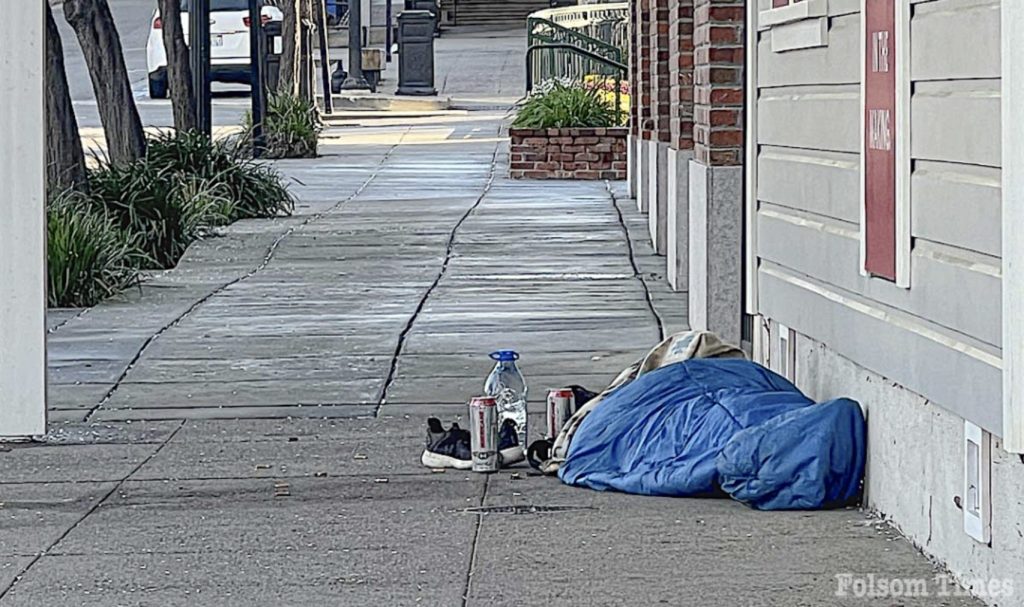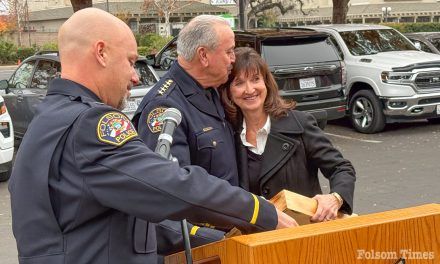Public attendance encouraged as city, county leaders come together for full day unified meeting to tackle crisis
SACRAMENTO — For the first time in Sacramento County’s history, city and county leaders from across the region, including Folsom, will gather Tuesday for a full-day joint meeting to confront the homelessness and behavioral health crises through a unified, countywide lens.
The County-City Collaboration on Homeless Services and Behavioral Health will take place Tuesday, Oct. 28, beginning at 10 a.m. inside the Tsakopoulos Library Galleria at 828 I Street in downtown Sacramento. The meeting, open to the public and broadcast live on Metro Cable Channel 14, marks an unprecedented cooperative effort among local jurisdictions that have long shared the same regional challenges but often worked within separate systems.
Folsom Mayor Sarah Aquino will join representatives from Sacramento County, the City of Sacramento, Elk Grove, Citrus Heights, Galt, and Rancho Cordova in what organizers describe as a first-of-its-kind gathering designed to strengthen coordination, share progress, and outline measurable goals to reduce homelessness across the county. Because of her participation in the meeting, Aquino will postpone her regular mayor’s office hours to Tuesday, Nov. 4, from 2 to 5 p.m. at Folsom City Hall.
The regional summit was initially proposed by Sacramento City Mayor Pro Tem Eric Guerra and organized jointly by Sacramento County Board Chair Phil Serna and Sacramento Mayor Kevin McCarty, both of whom will co-chair Tuesday’s proceedings. “I’m grateful to my colleague Eric Guerra for introducing the idea of this meeting,” said Serna. “It is undeniably important that we take a coordinated and county-wide approach to addressing homelessness. While we are all doing great work individually, we are stronger together and can have a deeper impact on the crisis of homelessness we currently face.” McCarty called the summit a long-overdue opportunity to align jurisdictions. “This partnership is just the beginning,” he said. “This first-time-ever meeting of Sacramento County, Sacramento City, and our neighboring cities is a good start, and we will keep building.”
The joint session will bring together more than two dozen elected officials and department heads, representing the full Sacramento County Board of Supervisors and Sacramento City Council, along with mayors or delegates from every incorporated city in the county. The agenda includes four major presentations: Progress and Possibilities in Addressing Homelessness, Behavioral Health Engagement Strategies and Legal Pathways to Treatment, Federal and State Impacts on Safety-Net Programs, and a Countywide Visioning Session to establish measurable outcomes and regional priorities.
Each presentation builds upon the All In Sacramento Regional Framework and Action Plan (2024–2027) — a coordinated strategy developed by Sacramento Steps Forward, the Sacramento City and County Continuum of Care, the City of Sacramento, Sacramento County, and the Sacramento Housing and Redevelopment Agency. The plan sets specific targets: reduce unsheltered homelessness by 20 percent between 2024 and 2026 and increase the number of people exiting homelessness to permanent housing to at least 42 percent.
According to the most recent Point-in-Time Count, an estimated 16,000 to 19,000 people experience homelessness each year in the Sacramento region. Roughly 35 percent of those individuals are unsheltered due to inadequate shelter capacity, and 41 percent meet the definition of chronic homelessness. Nearly one in six homeless households includes children. The plan emphasizes three pillars — Prevent, Respond, and Resolve — by expanding prevention programs for at-risk residents, increasing outreach and shelter options, and improving long-term housing solutions through regional coordination.
A significant portion of Tuesday’s meeting will focus on behavioral health services, which Sacramento County officials describe as integral to any long-term solution. The county’s Department of Health Services will outline pathways through Assisted Outpatient Treatment (AOT), the CARE Court program, and Mental Health Diversion initiatives — programs that provide supervised treatment in lieu of incarceration or hospitalization for individuals with severe mental illness. The county’s Behavioral Health Services division now operates on an annual budget of $668 million, serving more than 39,000 clients through a network of 161 provider agencies and 238 programs, with 3,500 workers across its continuum of care.
Officials will present new data on how expanded diversion programs, crisis response teams, and mental health courts have linked participants to stable treatment and reduced repeat emergency encounters. One presentation, “Pathways to Behavioral Health Court and Justice-Involved Treatment,” will detail how the AOT and CARE Court programs differ — with AOT focusing on court-ordered outpatient treatment and CARE Court emphasizing voluntary participation with supportive decision-making. Both are designed to stabilize individuals who are unable to live safely without supervision while connecting them to housing and care. County staff will also highlight Mental Health Diversion Law (Penal Code 1001.36), which allows eligible defendants with qualifying mental health conditions to have criminal charges dismissed after completing treatment, helping reduce the jail population and improve recovery outcomes.
Another key segment of Tuesday’s meeting will feature Alex Visotzky, senior California policy fellow at the National Alliance to End Homelessness, presenting an overview of the shifting federal and state policy landscape. Visotzky’s presentation outlines several potential challenges: proposed federal budget cuts that could slash rental assistance programs by up to 44 percent, eliminate major housing block grants, and reduce access to Emergency Housing Vouchers issued under the American Rescue Plan. Without congressional action, those vouchers — currently keeping about 15,000 California households housed — are projected to run out by mid-2026.
At the state level, the All In Sacramento Year-Two update warns of shrinking one-time funding streams. The state’s Homeless Housing, Assistance and Prevention (HHAP) program, which has invested more than $5.5 billion statewide over seven rounds, remains uncertain beyond 2026. The report emphasizes that continued local coordination will be critical to sustaining progress should state or federal revenues decline. Despite financial headwinds, California’s coordinated investments have produced measurable outcomes. Since 2023, the HHAP program has supported more than 80,900 permanent housing placements statewide, including 4,057 in the Sacramento City and County Continuum of Care, and provided access to services for more than 300,000 people.

The afternoon portion of the meeting will include a countywide visioning session where elected officials and staff will discuss what measurable success looks like and define next steps for the regional action plan. Topics will include coordination of data systems, improvements in emergency shelter standards, and stronger discharge planning for individuals exiting hospitals or jails. A recent survey conducted by Sacramento Steps Forward found that 62 percent of respondents identified the lack of temporary and permanent housing as the most critical challenge facing the region, followed by funding shortfalls and inconsistent policies across jurisdictions. Nearly every participating city, including Folsom, described homelessness as either a significant or critical concern.
In response, the regional framework outlines eight “solution areas,” ranging from improved coordinated access systems and integrated behavioral health services to expanded rehousing programs and capacity building for the homelessness response workforce. Together, those strategies are intended to make homelessness “rare, brief, and non-recurring.” Members of the public are encouraged to attend or watch online. Those wishing to provide comments may do so in person by completing a speaker card at the meeting or by emailing written remarks toBoardClerk@saccounty.govbefore 5 p.m. Monday. Comments received before the deadline will be attached to the official record and posted with the agenda.
The meeting will replay on Friday, Oct. 31, at 6 p.m. on Metro Cable Channel 14, and a recorded version will be available afterward at youtube.com/metrocable14. All supporting materials are posted online at bospublicmeetings.saccounty.gov and meetings.cityofsacramento.org.
For Folsom residents and local leaders, the regional collaboration offers an opportunity to align resources with neighboring cities and learn from models that are working elsewhere in the county. Folsom continues to participate in regional task forces focused on housing navigation, shelter access, and behavioral health coordination through its partnerships with Sacramento Steps Forward and the Continuum of Care. The hope among organizers is that Tuesday’s meeting will not only foster transparency but also accelerate tangible progress on one of the Sacramento region’s most urgent humanitarian challenges.
“While homelessness doesn’t recognize city limits, our solutions can,” Serna said. “The goal is to come together — to listen, plan, and act as one community.”
Copyright © 2025, Folsom Times, a digital product of All Town Media LLC. All rights reserved. No portion of this publication may be reproduced, distributed, or transmitted in any form or by any means, without the prior written permission of the publisher.




